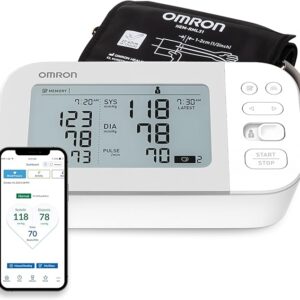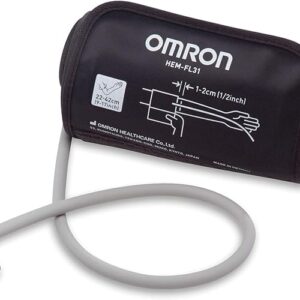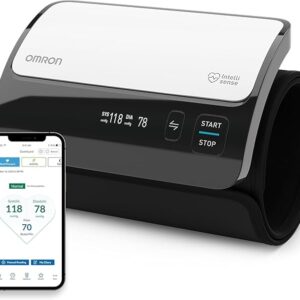Description
The Omron G7L-2A-BUB-J-CB-DC24 is a Power Relay designed for industrial automation applications. This particular model is a DPST-NO (Double Pole Single Throw, Normally Open) relay with a 24VDC control voltage and is capable of handling up to 25A of current. It also features a bracket for easy mounting and integration into systems.
Key Specifications:
- Model: G7L-2A-BUB-J-CB-DC24
- Type: Power Relay, DPST-NO (Double Pole Single Throw, Normally Open)
- Control Voltage: 24VDC
- Contact Current Rating: 25A (per contact)
- Contact Voltage Rating: 250VAC
- Switching Capacity: Up to 25A at 250VAC (for resistive load)
- Mounting: Comes with bracket for easy installation
- Coil Power Consumption: Low power consumption
- Contact Resistance: Low, ensuring efficient operation
- Contact Material: Silver alloy (for long durability)
- Standard Compliance: UL, CSA, and other international standards
Pros:
- High Current Capacity (25A):
- The G7L-2A-BUB-J-CB-DC24 relay can handle up to 25A of current per contact, making it suitable for switching high-power loads in industrial machinery, automation systems, and control circuits.
- Double Pole, Single Throw (DPST-NO):
- The DPST-NO configuration allows the relay to control two separate circuits simultaneously, both of which will be normally open. This makes it ideal for applications where you need to switch multiple lines or devices with a single relay.
- 24VDC Control Voltage:
- The 24VDC control voltage is a common standard in many industrial applications, making it easy to integrate into existing systems. This voltage range is also efficient and reduces energy consumption compared to higher-voltage relays.
- Bracket for Easy Mounting:
- The inclusion of a bracket simplifies the relay’s installation, providing a secure and convenient mounting solution that enhances the ease of system integration, especially in tight spaces.
- Low Coil Power Consumption:
- The low power consumption of the coil helps reduce the load on your control system, making this relay energy-efficient. This is especially important in applications where the relay is frequently switched on and off.
- Durability and Long Life:
- The relay features silver alloy contacts, which offer long-term durability and resistance to wear and corrosion. This ensures a long service life even under heavy switching conditions.
- Versatile Industrial Use:
- Due to its high current capacity, wide voltage ratings, and DPST-NO configuration, this relay can be used in a wide variety of industrial applications, including motor control circuits, power distribution, and automation systems.
- Safety and Compliance:
- The G7L-2A-BUB-J-CB-DC24 relay complies with UL and CSA standards, ensuring that it meets the necessary safety and reliability requirements for industrial applications.
- Good Resistance to Switching Arcs:
- With silver alloy contacts, this relay offers good resistance to switching arcs, which helps extend the lifespan of the contacts and prevents early failure due to high inrush currents or inductive loads.
Cons:
- No NC (Normally Closed) Contacts:
- The relay is configured as DPST-NO (Normally Open), meaning it can only close the circuit when energized. If your application requires Normally Closed (NC) contacts to break the circuit when the relay is energized, you’ll need to look for a different relay with NC contacts.
- Limited to 25A Current Rating:
- While 25A is sufficient for many industrial applications, it may not be enough for high-power applications requiring more than 25A of current. For circuits that demand higher current handling capacity, you’d need to choose a relay designed for higher currents, such as 50A or 100A.
- Mechanical Switching Limits:
- The G7L series relays are mechanical devices, meaning their contact life will be limited by mechanical wear and tear, especially in high-frequency switching applications. For extremely frequent switching, solid-state relays might be a better choice.
- Size:
- The G7L-2A-BUB-J-CB-DC24 relay is physically larger than smaller relays, so it may not be suitable for applications where space is limited. Consider the dimensions carefully before integrating this relay into compact systems.
- Inrush Current Limitations:
- The relay’s contacts can handle high currents but may struggle with high inrush currents from inductive loads like motors or transformers. This could result in contact arcing or damage over time. To mitigate this, you may need a relay with an inrush current limiting feature.
- DC Control Only:
- The G7L-2A-BUB-J-CB-DC24 is designed for DC control voltage (24VDC). If your system uses AC control voltage, this relay won’t be compatible, and you’ll need a relay designed for AC control (e.g., AC coil relays).
- Cost Relative to Smaller Relays:
- While this relay is highly reliable and designed for heavy-duty applications, it can be more expensive than smaller, lower-current relays. If your system only requires switching lower currents (less than 10A), a smaller and less expensive relay might suffice.
Questions to Consider:
- What is the current rating required for your application?
- The 25A rating is ideal for many industrial applications. However, if your application requires more than 25A, you’ll need to opt for a relay with a higher current capacity, such as a 50A or 100A relay.
- Do you need to switch multiple circuits simultaneously?
- Since this is a DPST-NO relay, it can control two circuits at once. If your application requires the relay to control more than two circuits, you might want to consider relays with a more complex switching configuration (such as DPDT or 4PDT).
- Is your application primarily using AC or DC?
- The G7L-2A-BUB-J-CB-DC24 is designed for a 24VDC control voltage. If your application requires AC control voltage, this relay won’t be suitable, and you will need to select a relay with an AC coil.
- Is frequent switching expected?
- If your application involves frequent switching, the mechanical nature of this relay may not be ideal due to contact wear. In that case, you may want to consider a solid-state relay (SSR) for more frequent cycles and longer lifespan.
- What type of load are you switching?
- If you’re switching inductive loads (e.g., motors, solenoids), you may need to consider whether this relay is designed to handle high inrush currents. In such cases, snubber circuits or relays designed to manage inrush currents might be needed to protect the relay’s contacts.
Summary:
The Omron G7L-2A-BUB-J-CB-DC24 is a highly durable power relay designed for industrial automation systems with a 24VDC control voltage and a 25A current rating. It offers flexibility for controlling two separate circuits simultaneously via its DPST-NO configuration and is easy to install with its included mounting bracket.
However, its mechanical nature and the 25A current limit may not be suitable for applications requiring frequent switching or higher currents. Additionally, it is designed for DC control only, so it may not be suitable for AC systems.
If your application involves high-power switching and you need a reliable relay for industrial control systems, the G7L-2A-BUB-J-CB-DC24 is a solid choice. However, be sure to evaluate your current needs, switching frequency, and voltage compatibility before proceeding. Would you like help with alternatives for AC control or higher current capacity?




Reviews
There are no reviews yet.